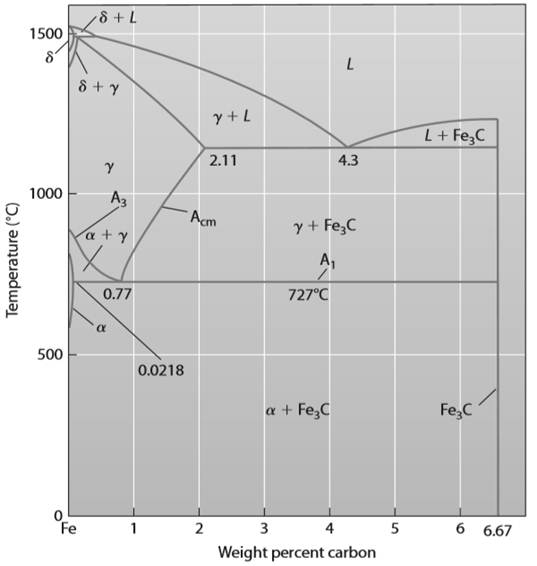
(a)
The phases present and the weight fraction of each phase after the procedure.
(a)
Answer to Problem 5.17P
The phases present is
Explanation of Solution
Draw the phase diagram for Iron carbon alloy as shown below:

Refer to Above figure; when
At
Write the expression for weight fraction of
Here,
Write the expression weight fraction for
Here,
Calculation:
Substitute
Substitute
Thus, the phases present is
(b)
The approximate weight fraction of alloy in proeutectoid
(b)
Answer to Problem 5.17P
The approximate weight fraction of alloy in proeutectoid
Explanation of Solution
Refer to the phase diagram of iron-carbon alloy the chemical composition of
Write the expression for weight fraction of
Here,
Write the expression weight fraction for Pearlite phase by lever rule.
Here,
Calculation:
Substitute
Substitute
Thus, the approximate weight fraction of alloy in proeutectoid
Want to see more full solutions like this?
Chapter 5 Solutions
Materials Science And Engineering Properties
 Materials Science And Engineering PropertiesCivil EngineeringISBN:9781111988609Author:Charles GilmorePublisher:Cengage Learning
Materials Science And Engineering PropertiesCivil EngineeringISBN:9781111988609Author:Charles GilmorePublisher:Cengage Learning
